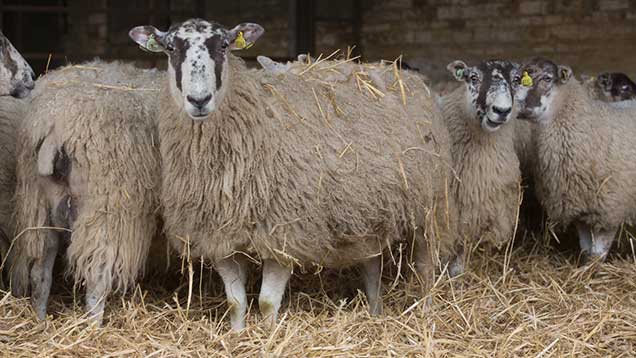How to manage ewe nutrition in critical pre-lambing period
 © Tim Scrivener
© Tim Scrivener Careful management of ewe nutrition, particularly during the last six to eight weeks of pregnancy, is vital to ensure successful foetal growth and development.
“Ideally, a body condition score of 2.5-3.0 should have been achieved pre-tupping and farmers should be striving to maintain this throughout the majority of pregnancy,” says Michael Marsden, Trident Feeds technical manager.
See also: Top five GB sheep breeds revealed in Eblex survey
“During the early stages of pregnancy, the ewe’s additional requirements for energy and protein are relatively low. However, they increase rapidly during the final six weeks as about 70% of foetal growth occurs during this period.
“It’s crucial to remember that as lambs continue to grow in the uterus, they take up a greater proportion of body space, reducing the capacity of the ewe’s rumen. And as a result, their appetite can decrease by up to 30%.
“For this reason, it’s important to increase the nutrient density of the ration as the gestation period progresses to keep the additional nutrient supply at equal pace with foetal growth,” says Dr Marsden.
“Farmers should be aiming for an energy content of at least 12.5MJ ME per kg DM in the supplementary concentrates, plus at least 16-18% crude protein if feeding hay or silage; or 20% for straw-based rations.”
Dr Marsden believes that given this year’s favourable cereal prices, farmers will be looking to feed as much cereal-based feed as possible.
However, too much starch can very quickly upset the rumen, causing acidosis. This can lead to lower birthweights and poor milk quality, ultimately affecting early lamb growth rates.
He advises that feeding cereals as part of the ration is not a problem as long as producers make sure this starchy energy from cereals is balanced adequately in the rumen.
This can be managed by including a good amount of digestible fibre, which is available from feed sources such as sugar beet feed and bioethanol distillers’ feeds.
But he warns to check that it is low in copper, as some wheat distillers from the whisky distillery process that use copper stills may not have a low copper content.
Copper is a key consideration for sheep farmers, especially with some breeds where copper is particularly dangerous.
